DEEP SEA CREATURES
Deep sea creatures are fish and other creatures that live down in the deepest part of the ocean. It is very cold down at the bottom and there is no sunlight only the light produced by the some of the creatures. Almost every deep sea creature has a cell in their body that makes a light
Whales can dive to about 3,500 feet deep in search of their prey. The Giant squid
is one of the very few deep ocean creatures that can visit the ocean surface. The Viperfish
have long sharp clear teeth that they use to catch there prey. The Hatchet
fish has a light that attracts their prey. Gulper eels
have huge heads and mouths so they can swallow their prey easily. They also have elastic stomachs, which allows them to eat fish larger then themselves. Anglerfishes use a light on top of their head to catch their prey. The Rattail fish detects its prey with a whip like tail. A Sea Pen is a little worm like creature that lives and crawls on the ocean floor. Many fish larger than the Sea Pen make it
their lunch. Many deep-sea creatures are black, there for they are easy to see with the light that is produced. But some deep-sea fish and prawns are bright red which makes it hard for them to be caught. Some fish, especially the Hatchet fish and the Lantern fish swim to the top to catch their prey. If a deep-sea fish or creature from the bottom of the ocean to the twilight zone is brought up to the surface, their organs and eyes will explode and they will die. Fish of the deep-sea have a light that they produce from a cell in there body. The light that theyproduce is a greenish-yellow color.
Only soft body animals can live at those depths such as jellyfish, sea anemones and other soft bodied animals.
Deep Sea
The deep sea is the part of the ocean below a depth of 200 metres that is in permanent darkness. The abyss, with an average depth of 3.8 kilometres, is the most common environment on Earth.
The sea floor is covered by vast plains of soft sediments made up of fine detritus and particles that drift down from the surface. The water is cold because it comes from the polar regions, and its weight puts considerable pressure on life at the bottom of the sea.
Although the deep sea floor has no plants, our studies show that it is extremely diverse in animal species, often having many more than shallow water. For example, a shallow water area may have only 10 - 20 species of Deep Sea Animals
Deep Sea Animals live in the marine ecosystem or in oceans. If you look at the marine biology, you will find millions of species of sea animals. The marine life is a large resource that offers tourism, research and recreation for many countries across the globe. Marine life helps to determine the very nature of our planet. All the Deep Sea Animals along with other organisms such as algae and corals contribute to the oxygen cycle and regulate our earth's climate, this is why the marine ecosystem is considered to be very delicate and it needs to be protected.
Deep Sea Creatures
Deep Sea Monkeys
Deep Sea Birds
Deep Sea Snakes
Deep Sea Turtles
Deep Sea Lions
Deep Sea Otters
Seals
Deep Sea Monsters
Sea Waters
Deep sea is nothing but the stumpy level in the marine that is found in the depth of more than 1800 m. This area is completely dark because no light can make a way inside it. 71 % portion of the earth is occupied by water and people are utilizing ocean for various purposes such as transportation, fishing, exploration and many more. However, the deep part of the sea is still remains untouched. Seeing the situation majority of the scientist thought that life would be scant in the deep sea, but almost each search has discovered that life is plentiful in this reason. The deepest layer of ocean has lots of unthinkable stories, secrecy and legends that make mankind more curious about the life that is surviving bottom of the sea.
People are much aware about the moon since it is easily viewable compare to Deep Sea. Initially people didn’t assumed the possibility of life at the bottom but later as the flourishing colonies of shrimp and other organisms discovered, people starting believing that there are abundant creatures surviving in dark. As Sun light and oxygen can’t reach there but still life is surviving, it has become an innovative discovery that says life can even subsist without oxygen or Sun light that considerably enhance the possibility of the life somewhere else in the space.
From many decades, the sea has been a scientific research center for the series of development. The outcome of discovery can be seen in a form of various deep sea creatures. Deep sea creatures are nothing but fishes and other animals that survive down in the deepest part of the marine. The coral reef is a platform for these far-fetched living things. Fishes are presented in different shapes and abilities. Some of them don’t look like fishes but resemble to eels (a fish that has a long thin body similar to a snake). You can find puffer fishes, which actually enlarge similar like balloon to save their life from carnivorous animals. There are seahorses that generally come under one of the most strange fish designs on the reef and you will be surprised to know that male seahorse gives birth to the juvenile.
It is very icy and dark at the bottom and Sunlight can’t reach there but most of the deep sea animals produced light that can be seen easily in dark. Majority of them enclose a cell in their body that produces light. Most of the deep sea creatures are black in color, that’s the reason they are easily seen with the light that they produced.
However a number of deep-sea fishes and prawns are bright red color that makes tough for them to be caught. Few fishes only can swim down to top in order to catch their prey. Because, if deep sea creatures brought up on the ocean surface from the bottom, then their body organs and mainly eyes will burst and they will depart the life. The light which they produced from their mainly provide greenish golden color. Animals with soft body only can survive at the depth of sea, for example jellyfish, aquatic anemones and other soft body animals. Most of them are bioluminescent and they usually have large eyes to adjust in dark. Few of the deep sea animals have long sensors that facilitate them to find prey or draw buddy in the terrain black of the deep marine.
The lifespan of deep sea animals can be solely in deep water, even though a number of species are inherent in less deep water. From many decades, people are doing deep sea exploration to find out substantial, chemical, and organic environment at the bottom of the marine, for technical and commercial usages. The creatures of the deep sea are one amongst the most indescribable creatures on Earth. There are still many unknown deep sea information yet to study.
As the sun light is not able to reach at the bottom, most deep aquatic animals need to depend on organic substance dropping from higher levels. Therefore lots of species of deep sea are visibly small with large mouths and guts compare to those living at surface level. It has also been explored that deeper the creatures survive, they will have more rubbery tissues with least bone structure, which make them comparatively slow and less alert than surface animals. Humans are kept on searching to know more about deep sea creatures and to get the answers for their thousands of questions.
Any aquatic animal can be categorized under deep sea foods that are served as foodstuff and have all rights to be eaten by humans. Fish, shellfish and edible seaweeds are also come under sea foods that are usually eaten all over the world. The term “Fishing” is known as harvesting of seafood and “cultivation” of seafood is generally known as aquaculture/mariculture, or fish farming( in case of only fish). Seafood is considered as a major source of protein across the world and particularly in seaside regions. Moreover, various investigations have dictated that sea foods are rich source of vitamins, minerals, fats and also used to keep fit. But some of them are having toxic elements, hence they should be avoided. Balance diet is always good to keep healthy body.
Angel Fish
Common Name: Angel Fish
Scientific Name: Pterophyllum Scalare
Common Name: Angel Fish
Scientific Name: Pterophyllum Scalare
Description
Angelfish are, and forever have been, one of the most accepted fish in the diversion today. Many different colored varieties and patterns are accessible, with new ones showing up regularly. They are available in both standard finned and mask varieties, oftentimes beyond 12 inches in height from the top of their dorsal fin to the tilt of their ventral fin. Angels are accessible in a variety to suit just about any aquarist, from normal silvers to golds, to koi varieties to leopard-spotted to black to half-black and just concerning all in between.
Diet
Angelfish can endure on crumble food alone, but they will flourish and be much more appropriate to type on a greatly varied diet. Live foods such as Adult Brine Shrimp, Black Worms, Mosquito larvae, finely chopped earthworms and Guppy fry are established with enthusiasm and should be included often. If live food is not obtainable, frozen packages of Blood Worms (Midge Fly larvae), Brine Shrimp and others are accessible from your favorite pet supply store and are adequate substitutions for the live food. There are many dried foods available that will be adequate too.
Behaviour
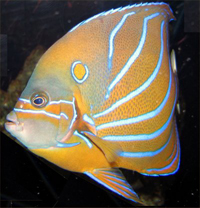 Unlike other fishes, anemonefish can maintain immunity to toxic stinging cells in the anemone's tentacles by constantly stroking their bodies over tentacle surfaces. Some research suggests that the fish secrete mucus that helps protect them from the anemone's sting. Mucus from the anemone builds up on the fish's skin until it becomes 'anemone-like' and the anemone itself does not distinguish between the fish and its own tentacles or recognises the fish as potential food. The anemonefish benefits from the partnership, gaining a protected place to live within the anemone's stinging tentacles.
Unlike other fishes, anemonefish can maintain immunity to toxic stinging cells in the anemone's tentacles by constantly stroking their bodies over tentacle surfaces. Some research suggests that the fish secrete mucus that helps protect them from the anemone's sting. Mucus from the anemone builds up on the fish's skin until it becomes 'anemone-like' and the anemone itself does not distinguish between the fish and its own tentacles or recognises the fish as potential food. The anemonefish benefits from the partnership, gaining a protected place to live within the anemone's stinging tentacles.
The anemones also benefit from their partnership with the anemonefish. Anemonefish defend their host anemones from predatory fishes that are immune to the stinging cells. Some researchers also report that anemonefish may 'feed' their anemones by dropping bits of food on the anemone surface. Anemonefish spend their entire adult lives with a single host.
Life History
As a general rule anemonefish enter into permanent monogamous pairings. Juveniles live on an anemone with a sexually mature male and female pair. If the female dies, her male partner develops into a female to take her place. The largest juvenile then grows rapidly and replaces him as the dominant male.
Males typically prepare a nest site for spawning and then attract the egg-bearing female to the nest. The male guards the nest from predators and other males while the female lays her eggs in long rows, forming a solid, uniform mass of eggs in a single layer. The eggs adhere to the substrate and clutch size varies from 200 to 2500 eggs depending on the species. Generally the young fish (fry) when hatched are left to look after themselves.
Habitat
These fish live in warm tropical waters, usually at depths of 1-12 m, on sheltered inshore and offshore coral reefs and most importantly, where one or more of 10 favoured host anemone species are found.
Special Features or Habits
Anemonefish can change from male into female. They start off male, but if the female dies the dominant male will change into a female. A non-dominant male will then become the dominant male.
Location or Region Found
Western Pacific: eastern Australia (Great Barrier Reef and Coral Sea, northern New South Wales), New Caledonia, and Loyalty Islands.
Flying Fish
Common Name: Flying Fish
Scientific Name: Cypselurus melanurus
Common Name: Flying Fish
Scientific Name: Cypselurus melanurus
Description
Exocoetidae is called as flying fish are a marine fish family comprising about 64 species grouped in seven to nine genera. Their most striking feature is their pectoral fins, which are abnormally large, and enable the fish to hide and escape from predators by leaping out of the water, taking short glided flights through air just above the water's surface. Their glides are typically 40 m to 50 m, but they can use updrafts at the leading edge of waves to cover distances of at least 400 m (1,300 ft).
Diet
Flying fish feed mainly on plankton. Predators include dolphins, tuna, marlin, squids, porpoises and birds
White-Spotted Eagle Ray
Common Name: Spotted Eagle Ray
Scientific Name: Aetobatus Narinari
Scientific Name: Aetobatus Narinari
Description
The White-Spotted Eagle Ray in Queensland grows to at least 3m disc width. It has a rounded head with a duck like bill or rounded snout. The top part of the body is covered in numerous white spots on black or bluish background. It is white below. It has a long whip like tail, with usually one short spine (can have up to five) near the base, behind a small dorsal fin.
Diet
The ray feeds mainly on bivalves, but also eats shrimps, crabs, octopus and worms, whelks, and small fish. It eats by crushing its food with a series of flat, plate-like teeth in a protrusive mouth. Groups of eagle rays sometimes invade coral reef lagoons to feed with the incoming tide.
Behaviour
The White-Spotted Eagle Ray is a benthic species, meaning it feeds on the bottom of the ocean. However, it often swims close to the surface and occasionally makes spectacular leaps high out of the water. It frequently forms large schools during the non-breeding seasonAll these animals live in saltwater habitats. They live in or near rock pools, the ocean, beaches, mangroves and sand dunes.
Banded Grunter
Common Name: Banded Grunter
Scientific Name: Amniataba percoides
Scientific Name: Amniataba percoides
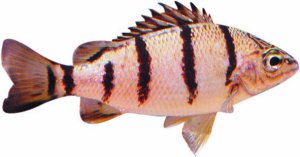
Description
The Banded Grunter has five to eight black bars on the side of the body. The caudal fin has a dusky lower margin and spots centrally.
Size
The species grows to about 12 cm in length.
Diet
Dietary items include insects, crustaceans and algae.
Australian Brain Coral
Common Name: Australian Brain Coral
Scientific Name: Goniastrea Australensis
Scientific Name: Goniastrea Australensis
Description
Brain corals look like round boulders, some reaching quite large sizes. Like all corals, the Australian Brain Coral is a living animal belonging to a group known as the 'coelenterates' or jelly animals. The whole coral is a collective or colony made up of thousands of individual coral animals called polyps. Each polyp has a simple hollow body with a mouth in the centre surrounded by tentacles. The polyps make the coral skeleton by each secreting a wall and a floor of limestone (calcium carbonate) around the outside of its body. The Australian Brain Coral has its own distinctive pattern of ridges and valleys formed by rows of polyps that share the limestone walls. The colours vary, but it is most commonly green or brown, sometimes with different coloured valley floors from the walls..
Diet
The polyps feed on tiny animals and particles from the water around them. The growth of the coral colony is enhanced by the presence of tiny plant cells, which live in the coral tissues. These plants harvest energy from sunlight and pass back energy to the coral to assist in the coral skeleton construction.
Behaviour
Brain corals mainly feed at night by extending their tentacles which are armed with stinging darts called 'nematocysts'. During the day their tentacles are retracted into the corallite base. The nematocysts paralyse their prey, such as tiny shrimp, and then their tentacles wave the prey into the mouth cavity where the food is digested. When the food is absorbed into the polyp, some of the nutrients are passed to other polyps via the interconnecting living tissue. The polyp and interconnecting tissue build up a limestone base (the coral skeleton) by extracting calcium and carbonate ions from the seawater.
Life History
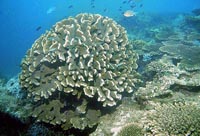 The polyps of the Brain Coral reproduce by releasing sperm and eggs into the water. These unite to form tiny round larvae called 'planulae'. Planulae, float in the water for a period of at least 5 days and those not eaten select a spot suitable for beginning a new colony. Smooth Dogfish Shark
The polyps of the Brain Coral reproduce by releasing sperm and eggs into the water. These unite to form tiny round larvae called 'planulae'. Planulae, float in the water for a period of at least 5 days and those not eaten select a spot suitable for beginning a new colony. Smooth Dogfish Shark
Common Name: Smooth Dogfish Shark
Scientific Name: Mustelus canis
Scientific Name: Mustelus canis
Description
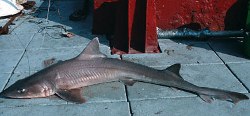 The smooth dogfish was originally described as Squalus canis by Mitchill in 1815 and later changed to the currently valid name of Mustelus canis. Mustelus is Latin in origin, and is translated as "weasel-like" while canis means "dog" in Latin.Mustelus canis insularis (Heemstra 1997) has been described as a subspecies of the smooth dogfish, occurring in parts of theCaribbean Sea. This subspecies usually occurs at greater depths (>655 feet (200 m)) than the Mustelus canis and prefers rocky bottom habitats.
The smooth dogfish was originally described as Squalus canis by Mitchill in 1815 and later changed to the currently valid name of Mustelus canis. Mustelus is Latin in origin, and is translated as "weasel-like" while canis means "dog" in Latin.Mustelus canis insularis (Heemstra 1997) has been described as a subspecies of the smooth dogfish, occurring in parts of theCaribbean Sea. This subspecies usually occurs at greater depths (>655 feet (200 m)) than the Mustelus canis and prefers rocky bottom habitats.
Zebra Shark
Common Name: Leopard Shark
Scientific Name: Stegostoma Fasciatum
Scientific Name: Stegostoma Fasciatum
Description

This fairly docile species grows to at least 2.4m in length, and possibly up to 3.5m. Juveniles less than 70cm in length are brown with narrow yellow to white bars and blotches (this is why they are called a Zebra Shark). These markings change as the animal grows into an adult and the bars are replaced with a covering of dark brown spots on a background of yellow-brown, hence their other common name, the Leopard Shark. Only the adults have the characteristic spotted pattern. The Zebra Shark has large pectoral fins, two close-set, dorsal fins and a very long caudal fin that lacks a ventral lobe. It is a slow-moving species that has 5 gill slits and strong ridges running lengthwise along the upper side.Habitat & Range
As one of the most abundant sharks on the east coast of the U.S., the smooth dogfish's range is primarily the western Atlantic Ocean, from Massachusetts to Florida (U.S.), and from southern Brazil to northern Argentina. It is also found in the northern Gulf of Mexico, the Caribbean Sea, and Bermuda.
A common resident on continental shelves, bays, and other inshore waters, the smooth dogfish prefers shallow waters of less than 60 feet (18 m) in depth but may be found to depths of 655 feet (200 m). This species has also been found on occasion in freshwater although it is unlikely they can survive freshwater for extended periods of time.
A common resident on continental shelves, bays, and other inshore waters, the smooth dogfish prefers shallow waters of less than 60 feet (18 m) in depth but may be found to depths of 655 feet (200 m). This species has also been found on occasion in freshwater although it is unlikely they can survive freshwater for extended periods of time.
Biology
This small, slender shark has two large spineless dorsal fins with the first dorsal slightly larger than the second. The second dorsal fin is approximately twice as large as the anal fin and positioned slightly anterior to the anal fin. The lower lobe of the tail is rounded and much shorter than the upper lobe. The subspecies Mustelus canis insularis appears identical to Mustelus canis, however it differs in possessing a slightly higher dorsal fin and a longer caudal fin tip. The main distinction between these two species is the number of vertebrae, with the subspecies Mustelus canis insularis having more vertebrae than Mustelus canis. Maximum total length for the smooth dogfish has been documented as 59 inches total length(150 cm) with a maximum weight of (27 pounds) 12.2 kg. Smooth dogfish reach maximum size at seven to eight years of age.When a planula settles, it changes into a polyp, begins to secrete limestone and then begins to feed and grow by budding to form a new polyp. This process repeats itself many times resulting in the formation of a new Brain Coral colony.
Habitat
They are commonly found in shallow water such as intertidal reef flats or fringing reefs, rocky shorelines and harbour breakwaters. isopod crustaceans, while some deep sea habitats have more than 100 species.Deep
|
Tiger Shark
Common Name: Tiger Shark
Scientific Name: Galeocerdo cuvier
Beluga Whale
Common Name: Beluga Whale
Scientific Name: Delphinapterus Leucas
Description
Beluga whales are dark blue-gray in color, measure 3-5 feet long, and weigh 90-130 lbs. The color gradually lightens, usually turning white by age 5 or 6. Beluga whales grow to an average length of 15 ft. and can weigh more than 3,000 lbs. Generally, males are larger in size than females. Belugas are robust-bodied and have a blubber layer which can be as much as 5 inches thick. They are muscular creatures with a small rounded head, a short beak, and are quite mobile in comparison to other whales.
Diet
Angel sharks to eat small fishes, crustaceans, mackerel, croaker and molluscs.
Size
To about 18 ft (5.5 m).
Distingushing Characteristics
|
Frill Shark
Common name: Frill shark
Scientific name: Chlamydoselachus anguineus
Scientific name: Chlamydoselachus anguineus
Description
Frilled sharks are bottom dwellers and may contribute to removing decomposing carcasses. This carrion floats down from the open waters of the ocean above and comes to rest on the ocean floor.Today, frilled sharks are the only living species in the family Chlamydoselachidae(Sheikh-Miller, 2001).
Megamouth Shark
Common Name: Megamouth Shark
Scientific Name: Megachasma pelagios
Common Name: Megamouth Shark
Scientific Name: Megachasma pelagios
Description
When the first megamouth shark was captured in 1976, a new shark family, genus and species had to be erected. There are conflicting phylogenetic hypotheses regarding the evolutionary relationships between the Megachasmidae and other shark families. One theory suggests that the Megachasmidae is evolutionary derived and form a monophyletic family with basking shark, Cetorhinidae. Recent studies suggest that Megachasma pelagios is the most primitive living species within the order Lamniformes. The currently valid genus Megachasma is derived from the Greek "megas, megalos" = great and "chasma" = cave, while the species name pelagios is also Greek, meaning of the sea.
Chain Catshark
Common Name: Chain Catshark
Scientific Name: Scyliorhinus retifer
Common Name: Chain Catshark
Scientific Name: Scyliorhinus retifer
Description
Also known as the chain dogfish, the chain dogfish is a member of the cat shark family and is a cartilaginous fish. They are pale brown or sometimes yellowish with a chain link pattern on it's back which acts as camouflage.
Their eyesight is very poor - food is found primarily by smell.
Size
Up to 18 in. (46 cm)
Humpback Whale
Common Name: Humpback Whale
Scientific Name: Megaptera novaeangliae
Scientific Name: Megaptera novaeangliae
Description
Humpback whales are well known for their long "pectoral" fins, which can be up to 15 feet (4.6 m) in length. Their scientific name, Megaptera novaeangliae, means "big-winged New Englander" as the New England population was the one best known to Europeans. These long fins give them increased maneuverability; they can be used to slow down or even go backwards.
Similar to all baleen whales, adult females are larger than adult males, reaching lengths of up to 60 feet (18 m). Their body coloration is primarily dark grey, but individuals have a variable amount of white on their pectoral fins and belly. This variation is so distinctive that the pigmentation pattern on the undersides of their "flukes" is used to identify individual whales, similar to a humans fingerprint.
Diet
During the summer months, humpbacks spend the majority of their time feeding and building up fat stores (blubber) that they will live off of during the winter. Humpbacks filter feed on tiny crustaceans (mostly krill), plankton, and small fish and can consume up to 3,000 pounds (1360 kg) of food per day.
Orca Whale
Common Name: Orca Whale
Scientific Name:Orcinus orca
Common Name: Orca Whale
Scientific Name:Orcinus orca
Description
The Orca whales or killer whales are 'toothed' whales, with true teeth rather than fibrous plates for filter-feeding.Usually black and white, in Antarctic waters their skins are covered with a film of plankton called diatoms, which gives them a brownish and yellowish hue.
Diet
Orcas are born into a family group and remain with that group for the rest of their lives. As a result, they form very highly co-ordinated hunting packs, which are comparable to wolves or African wild dogs. Once they decide to tackle a prey animal, it often has little chance of escape.
| Deepseawaters Home
Bowhead Whale
Common Name: Bowhead Whale
Scientific Name: Balaena mysticetus
Description
The Bowhead Whale,Balaena mysticetes which means they have baleen plates instead of teeth for filtering food out of the ocean. Bowhead whales have extremely long baleen plates (up to 14 feet (m)) and feed almost exclusively on zooplankton, which includes small to moderately sized crustaceans such as copepods, euphausiids, and mysids, as well as other invertebrates and fish. Bowhead whales have a dark body and a distinctive white chin. Unlike most cetaceans, they lack a dorsal fin.
Bowhead whales have also been hunted by indigenous peoples for food and fuel for the last 2,000 years. Subsistence harvest is currently regulated by quotas set by the International Whaling
|
Ringed Seal
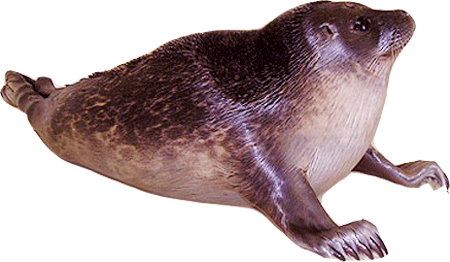
Scientific Classification

Scientific Classification
Kingdom: Animalia
Phylum: Chordata
Class: Mammalia
Order: Carnivora
Family: Phocidae
Genus: Phoca
Species: hispida
Phylum: Chordata
Class: Mammalia
Order: Carnivora
Family: Phocidae
Genus: Phoca
Species: hispida
Description
Ringed seals are part of the "true seal" family Phocidae. The ringed seal is the smallest and most common seal in the Arctic. They have a small head, short cat-like snout, and a plump body. Their coat is dark with silver rings on their back and sides with a silver belly. Their small foreflippers have claws more than 1 inch (2.5 cm) thick that are used to maintain breathing holes through 6.5 ft (2 m) thick ice.
Size
They grow to average lengths of 5 ft (1.5 m) with weights ranging
Bearded Seal
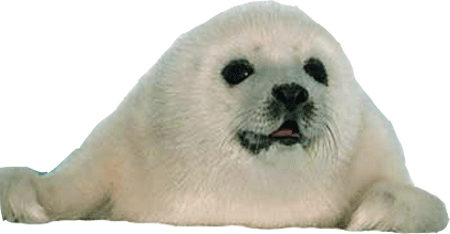
Scientific Classification

Scientific Classification
Kingdom: Animalia
Phylum: Chordata
Class: Mammalia
Order: Carnivora
Family: Phocidae
Genus: Erignathus
Species: barbatus
Phylum: Chordata
Class: Mammalia
Order: Carnivora
Family: Phocidae
Genus: Erignathus
Species: barbatus
Description
Bearded seals are members of the "true seal" family, Phocidae. They have a small head, large body, and small, square foreflippers. They have a short snout with thick, long white whiskers, which gives this species their "bearded" name. Their coat is dark brown or gray with dark rings and spots.
Size
Bearded seals grow to lengths of about 7-8 ft (2.0-2.5 m) and weigh about 575-800 lbs(260-360 kg), with females being slightly larger than males.
Ribbon Seal

Scientific Classification

Scientific Classification
Kingdom: Animalia
Phylum: Chordata
Class: Mammalia
Order: Carnivora
Family: Phocidae
Genus: Histriophoca
Species: fasciata
Phylum: Chordata
Class: Mammalia
Order: Carnivora
Family: Phocidae
Genus: Histriophoca
Species: fasciata
Description
The ribbon seal is one of nine species of ice seals inhabiting the Arctic and is the merely species in the genus Histriophoca. Ribbon seals living in the southern part of the OkhotskSea tend to be bigger and heavier than those living somewhere else
Leopard Seal
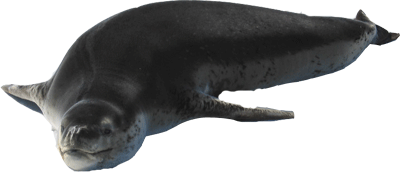
Scientific Classification
Kingdom: Animalia
Phylum: Chordata
Class: Mammalia
Order: Carnivora
Suborder:Pinnipedia
Family: Phocidae
Genus: Hydrurga
Species: H. leptonyx

Scientific Classification
Kingdom: Animalia
Phylum: Chordata
Class: Mammalia
Order: Carnivora
Suborder:Pinnipedia
Family: Phocidae
Genus: Hydrurga
Species: H. leptonyx
Description
Leopard Seals (Hydrurga leptonyx) are lonely animals that inhabit pack-ice nearby the Antarctic continent. The leopard seal is easily identified: designed for speed, the body is slender and the foreflippers long. The head is huge and the jaws open extensively revealing exceptionally long canines
Deep Sea Jellyfishes
Common Name: Jelly Fish
Scientific Name: Aurelia aurita (Common jellyfish)
Scientific Name: Aurelia aurita (Common jellyfish)
Description
 Jellyfish are members of the phylum Cnidaria, a structurally simple marine group of both fixed and mobile animals: sea anemones, sea whips, corals and hydroids are polyps that grow attached to rocks or other hard surfaces; jellyfish and colonial siphonophores like thePortuguese man-of-war are mobile (either actively swimming or subject to winds and currents).
Jellyfish are members of the phylum Cnidaria, a structurally simple marine group of both fixed and mobile animals: sea anemones, sea whips, corals and hydroids are polyps that grow attached to rocks or other hard surfaces; jellyfish and colonial siphonophores like thePortuguese man-of-war are mobile (either actively swimming or subject to winds and currents).
Nature of Jellyfish
Instead of a brain, jellyfish possess an elementary nervous system, or nerve net, which consists of receptors capable of detecting light, odor and other stimuli and coordinating appropriate responses.
Jellyfish are composed of an outer layer (epidermis), which covers the external body surface, and an inner layer (gastrodermis), which lines the gut. Between the epidermis and gastrodermis is a layer of thick elastic jellylike substance called mesoglea ("middle jelly"). Jellyfish have a simple digestive cavity, (coelenteron), which acts as a gullet, stomach and intestine, with one opening for both the mouth and anus. Four to eight oral arms are located near the mouth and are used to transport food that has been captured by the tentacles to the mouth.
Habitat
Jellyfish inhabit every major oceanic area of the world and are capable of withstanding a wide range of temperatures and salinities. Most live in shallow coastal waters, but a few inhabit depths of 12,000 feet!
Food
Jellyfish are carnivorous, feeding mostly on a variety of zooplankton, comb jellies and occasionally other jellyfish. Larger species, however, are capable of capturing and devouring large crustaceans and other marine organisms.Some species, including the mushroom and cannonball jellyfish, are even considered a delicacy by humans. Pickled or semi-dried mushroom jellyfish are consumed in large quantities in Asia, where they constitute a multimillion-dollar part of the seafood business.
Types of Jellyfish
Deep Sea Octopus
Common Name: Octopus
Scientific Name: Octopus vulgaris (Common octopus)
Scientific Name: Octopus vulgaris (Common octopus)
Description
Octopuses are characterized by their eight arms (as distinct from the tentacles found in squid and cuttlefish), usually bearing suction cups. These arms are a type of muscular hydrostat. Unlike most other cephalopods, the majority of octopuses - those in the suborder most commonly known, Incirrina - have almost entirely soft bodies with no internal skeleton.
Deep Sea Birds
Description
A seabird is a bird that spends most of its time at sea. Seabirds' is a general term used to collectively describe any species of bird which spends a substantial part of its life foraging and breeding in the marine environment. Birds considered to be seabirds include gulls, terns, albatrosses, petrels, shearwaters (muttonbirds), cormorants, gannets and boobies.
Biology, diet and breeding
Seabirds spend much of their lives roaming the oceans in search of prey. Most species tend to forage on their own, though large feeding flocks will gather at rich or passing food sources.Squid, fish and krill are common sources of food. Birds are known to follow fishing vessels, aggressively competing for discarded fish and baits.
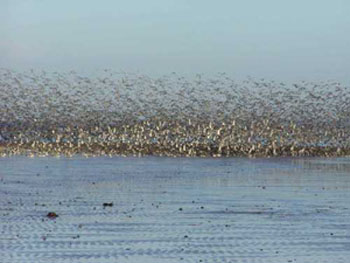
Many seabirds, such as albatrosses and petrels have long life spans with some individuals known to live for more than 60 years. They have low rates of natural mortality and low rates of mortality among their offspring. Most species achieve sexual maturity at 5-12 years of age and breed in colonies on remote islands, with the pair-bond being reinforced by elaborate courtship displays. While some species breed annually, others breed only every second or third year.
Parental duties are shared by both sexes. Petrels and shearwaters nest in simple scrapes or in a burrow or natural hole. Albatrosses nest in the open and, where nest material is available, build large bowl-shaped nests. Each pair lay a single, large (relative to body size), white egg which both parents incubate for 35-85 days in alternating shifts. After hatching, chicks are brooded for a short period until they are able to regulate their own temperature. After this period the chick is generally left alone, with parents returning only to provide food. Both parents feed the chick until it fledges at 110-304 days (depending on the species).
Habitat
Seabirds occur widely across the world's oceans. Twenty-two of the world's 24 albatross species occur in the Southern Hemisphere. Nineteen of these species occur in Australian waters, and five of these also breed in Australia. Many species, such as Grey-headed Albatrosses, are extremely dispersive, spending most of their time over the surface waters of the High Seas. In contrast, others, like adult Shy Albatrosses, tend to be sedentary, regularly foraging over the coastal waters of southern Australia throughout their adult lives.
Many other seabirds species in Australia breed at coastal mainland sites or on offshore islands, however may forage widely over both Australian and international waters.
Threats
Past threats to seabirds include being killed for meat, eggs and feathers. Today, modification of breeding habitats, oil spills and introduced feral animals are among the threats that can impact considerably on seabird populations. More recently, the global expansion of longline fisheries has begun to pose the greatest overall threat to seabirds.
Longline fishing is a method used to target finfish and shark species. A longline consists of a main line with numerous baited hooks attached to branchlines. The line can be set parallel to the surface or on the sea-bed. The number and type of hooks and the length of the branchlines depend on the target species. Longlines can be up to 100km long and have up to 10 000 hooks. Each year thousands of seabirds are accidentally killed on longline hooks when birds ingest baited hooks during the setting or hauling of the longline. Birds hooked are subsequently pulled under the water by the weight of the line and drown. The level of mortality that occurs in longline fisheries is not sustainable for many populations of seabirds.
However, this threat can be greatly minimised by modifying fishing practice and adoptingseabird by-catch mitigation measures. These include the use of bird-scaring lines and streamers, weighted lines to reduce the amount of time baits are available to birds, setting lines at night, setting lines beneath the waters' surface, and seasonal closures of fisheries to avoid fishing when birds are more susceptible to being caught, such as around nesting colonies during the breeding season. Adoption of these measures has now virtually eliminated seabirdby-catch in some fisheries.
Different Kind of sea birds have been arranged here in alphabetical order by scientific name.
| Image | Common Name | Scientific Name |
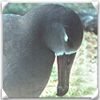 | Black-footed Albatross | Phoebastria nigripes |
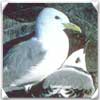 | Black-legged Kittiwake | Rissa tridactyla |
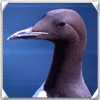 | Common Murre | Uria aalge |
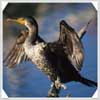 | Double-crested Cormorant | Phalacrocorax auritus |
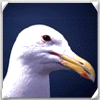 | Glaucous-winged Gull | Larus glaucescens |
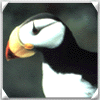 | Horned Puffin | Fratercula corniculata |
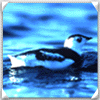 | Kittlitz's Murrelet | Brachyramphus brevirostris |
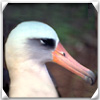 | Laysan Albatross | Phoebastria immutabilis |
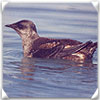 | Marbled Murrelet | Brachyramphus marmoratus |
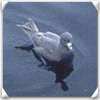 | Nothern Fulmar | Fulmarus glacialis |
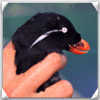 | Parakeet Auklet | Aethia psittacula |
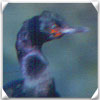 | Pelagic Cormorant | Phalacrocorax penicillatus |
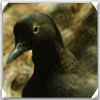 | Pigeon Guillemot | Cepphus columba |
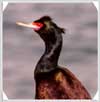 | Red-faced Cormorant | Phalacrocorax urile |
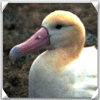 | Short-tailed Albatross | Phoebastria albatrus |
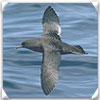 | Short-tailed Shearwater | Puffinus tenuirostris |
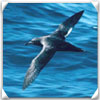 | Sooty Shearwater | Puffinus griseus |
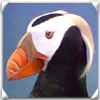 | Tufted Puffin | Fratercula cirrhata |
Deep Sea Monkeys
Common name: Sea Monkey(Brine Shrimp)
Scientific name: Artemia salina
Common name: Sea Monkey(Brine Shrimp)
Scientific name: Artemia salina
Description
Just over a centimeter in size, the adult sea monkey Artemia is an extremely wellknown animal because of its importance as a food source for fish and crustaceans raised in home aquariums, aquaculture systems, and in laboratories. One can buy brine shrimp at practically any pet display. It looks like a powdery brown substance but in reality the substance is thousands of cysts-eggs surrounded by protective cases.
Nature
Under magnification, the elongated shape and eleven pairs of limbs give this organism a shrimplike shape, but Artemia actually falls into an order of primitive crustaceans. Various pigments from the phytoplankton that the shrimp eats give hues of blue, green, and red to the otherwise transparent body.When the sea monkey is added to water, the cysts will hatch into shrimp nauplii within a few hours.
Lifecycle
In the United States, in areas such as the Great Salt Lake, the brine shrimp's yearlong life cycle usually begins in early spring. After hatching, the larvae will go through 15 molts before it reaches the adult form. These begin to die by October and most will be gone by December.
Reproduction
In the period from May to December females will give birth to either live nauplii or, if conditions are wrong for larvae survival, they will lay a number of cysts. These will be dispersed by winds and waves. Often the cysts drift to shore, where they remain until spring rainfalls wash them back into the water. These will later hatch when water, temperature, salinity, oxygen, and other seasonal conditions are right.
Special Features
It is this ability of the sea monkey cysts to remain dormant for long periods of time and then be easily hatched that has made them an easy live food for the use of tropical fish hobbyists and aquaculturist as well as a valuable organism for research. These cysts can withstand wide fluctuations in temperature due to their ability to lose, and regain, practically all of their intracellular water.
Uses
It has been useful to a variety of researchers in genetics, histology, toxicology, radio biology, biochemistry, molecular biology, and ecology. Because the cysts are also very small and require no food, they were chosen as test organisms for the early space experiments. Cysts housed both within and outside the U.S. Apollo and the U.S.S.R. Cosmos spacecraft helped scientists determine the effects of ultraviolet radiation on living cells.
| Deepseawaters Home
Deep Sea Turtles
Sea turtles are large shelled reptiles that breath air and live in the ocean. They are adapted for life in marine waters. They swim and steer with their front and hind limbs that are flippers. They also have tear ducts in their eyes that allow them to excrete salt.
Species of sea turtles that are commonly found in Florida's waters include the Atlantic green, loggerhead, Kemp's ridley, hawksbill and leatherback. Different sea turtles eat different foods
Major threats to sea turtles include loss of beach habitat due to development and accidental death in fishing nets.
Green Sea Turtle |
| Deepseawaters Home
Green Sea Turtle
Common Name: Green Sea Turtle
Scientific Name: Chelonia mydas
Description
Green turtles are the largest of the hard-shelled sea turtles with adults reaching a meter (3.3 feet) in carapace length and 150 kg (330 pounds) in weight. They have a smooth carapace with four pairs of lateral scutes and a single pair of elongated prefrontal scales between the eyes. The plastron remains a yellowish white, but the carapace changes color from solid black to a variety of shades of grey, green, brown and black in starburst or irregular patterns. Green turtle hatchlings are about 50 mm (2.0 inches) long and weight about 25 g (0.88 ounces).
Adult green turtles are unique among sea turtles in that they are herbivorous, feeding primarily on seagrasses and algae. This diet is thought to give them greenish colored fat, from which they take their name. A green turtle's carapace (top shell) is smooth and can be shades of black, gray, green, brown, and yellow. Their plastron (bottom shell) is yellowish white.
Scientists estimate green turtles reach sexual maturity anywhere between 20 and 50 years, at which time females begin returning to their natal beaches (i.e., the same beaches where they were born) every 2-4 years to lay eggs.
The nesting season varies depending on location. In the southeastern U.S., females generally nest between June and September, while peak nesting occurs in June and July. During the nesting season, females nest at approximately two week intervals, laying an average of five clutches. In Florida, green turtle nests contain an average of 135 eggs, which will incubate for approximately 2 months before hatching.
Habitat
Green turtles primarily use three types of habitat: oceanic beaches (for nesting),convergence zones in the open ocean, and benthic feeding grounds in coastal areas. Adult females migrate from foraging areas to mainland or island nesting beaches and may travel hundreds or thousands of kilometers each way. After emerging from the nest, hatchlings swim to offshore areas, where they are believed to live for several years, feeding close to the surface on a variety of pelagic plants and animals. Once the juveniles reach a certain age/size range, they leave the pelagic habitat and travel to nearshore foraging grounds. Once they move to these nearshore benthic habitats, adult green turtles are almost exclusively herbivores, feeding on sea grasses and algae.
Green turtles are generally found in fairly shallow waters (except when migrating) inside reefs, bays, and inlets. The turtles are attracted to lagoons and shoals with an abundance of marine grass and algae. Open beaches with a sloping platform and minimal disturbance are required for nesting. Green turtles apparently have a strong nesting site fidelity and often make long distance migrations between feeding grounds and nesting beaches. Hatchlings have been observed to seek refuge and food in Sargassum rafts. |
Hawksbill Turtle
Common Name: Hawksbill Turtle
Scientific Name: Eretmochelys imbricata
Scientific Name: Eretmochelys imbricata
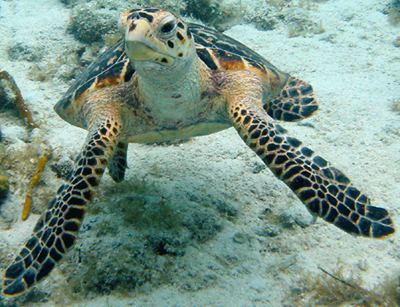
Description
The hawksbill turtle is small to medium-sized compared to other sea turtle species. Adults weigh 100-150 lbs (45 to 68 kg) on average, but can grow as large as 200 lbs (91 kg). Hatchlings weigh about 0.5 oz (14 g).
The carapace (top shell) of an adult ranges from 25 to 35 inches (63 to 90 cm) in length and has a "tortoiseshell" coloring, ranging from dark to golden brown, with streaks of orange, red, and/or black. The shells of hatchlings are 1-2 inches (about 42 mm) long and are mostly brown and somewhat heart-shaped. The plastron (bottom shell) is clear yellow. The rear edge of the carapace is almost always serrated, except in older adults, and has overlapping "scutes".
The hawksbill turtle's head is elongated and tapers to a point, with a beak-like mouth that gives the species its name. The shape of the mouth allows the hawksbill turtle to reach into holes and crevices of coral reefs to find sponges, their primary food source as adults, and other invertebrates. Hawksbill turtles are unique among sea turtles in that they have two pairs of prefrontal scales on the top of the head and each of the flippers usually has two claws.
Male hawksbills mature when they are about 27 inches (69 cm) long. Females mature at about 31 inches (78 cm). The ages at which turtles reach these lengths are unknown.
Female hawksbills return to their natal beaches every 2-3 years to nest at night approximately every 14-16 days during the nesting season. A female hawksbill generally lays 3-5 nests per season, which contain an average of 130 eggs. Hawksbill turtles usually nest high up on the beach under or in the beach/dune vegetation on both calm and turbulent beaches. They commonly nest on pocket beaches, with little or no sand.
Breeding areas and nesting seasons
Along the Great Barrier Reef, hawksbills nest in low numbers from just north of Princess Charlotte Bay to Torres Strait. Nesting also occurs in the Northern Territory and Western Australia.
Two major breeding areas occur in Australia:
Northern Great Barrier Reef, Torres Strait and northeastern Arnhem Land have several significant rookeries including: Milman, Johnson, Bouydong, Bird and Piper Islands in the northern GBR; Aukane, Kabikane, Mimi, Bet, Sassie and Lacey Islands in Torres Strait; and Hawk, North East and Truant Islands in north east Arnem Lan.
The north west shelf has several significant rookeries including Rosemary and Varanus Islands.
Although hawksbills breed throughout the year, the peak nesting period in the Torres Strait and Great Barrier Reef region occurs between January and April. In Arnhem Land, nesting peaks between July and September.
Leatherback Sea Turtle
Common Name: Leatherback Sea Turtle
Scientific Name: Dermochelys coriacea
Scientific Name: Dermochelys coriacea
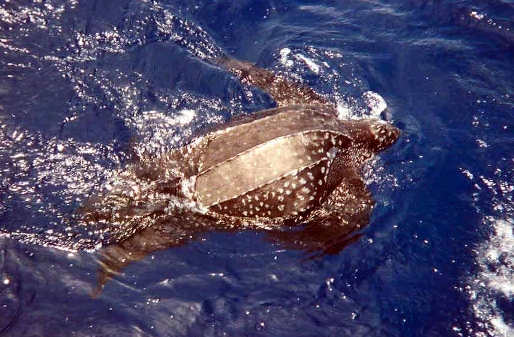
Description
The leatherback is the largest turtle and the largest living reptile in the world. Mature males and females can be as long as six and a half feet (2 m) and weigh almost 2000 lbs. (900 kg). The leatherback is the only sea turtle that lacks a hard, bony shell. A leatherback's carapace is approximately 1.5 inches (4 cm) thick and consists of leathery, oil saturated connective tissue overlaying loosely interlocking dermal bones. The carapace has seven longitudinal ridges and tapers to a blunt point. Adult leatherbacks are primarily black with a pinkish white mottled ventral surface and pale white and pink spotting on the top of the head. The front flippers lack claws and scales and are proportionally longer than in other sea turtles; back flippers are paddle-shaped. The ridged carapace and large flippers are characteristics that make the leatherback uniquely equipped for long distance foraging migrations.
Female leatherbacks lay clutches of approximately 100 eggs on sandy, tropical beaches. Females nest several times during a nesting season, typically at 8-12 day intervals. After 60-65 days, leatherback hatchlings with white striping along the ridges of their backs and on the margins of the flippers emerge from the nest. Leatherback hatchlings are approximately 50-77 cm (2-3 inches) in length, with fore flippers as long as their bodies, and weigh approximately 40-50 grams (1.4-1.8 ounces).
Leatherbacks lack the crushing chewing plates characteristic of sea turtles that feed on hard-bodied prey (Pritchard 1971). Instead, they have pointed tooth-like cusps and sharp edged jaws that are perfectly adapted for a diet of soft-bodied pelagic (open ocean) prey, such as jellyfishand salps. A leatherback's mouth and throat also have backward-pointing spines that help retain such gelatinous prey.
Female leatherbacks lay clutches of approximately 100 eggs on sandy, tropical beaches. Females nest several times during a nesting season, typically at 8-12 day intervals. After 60-65 days, leatherback hatchlings with white striping along the ridges of their backs and on the margins of the flippers emerge from the nest. Leatherback hatchlings are approximately 50-77 cm (2-3 inches) in length, with fore flippers as long as their bodies, and weigh approximately 40-50 grams (1.4-1.8 ounces).
Leatherbacks lack the crushing chewing plates characteristic of sea turtles that feed on hard-bodied prey (Pritchard 1971). Instead, they have pointed tooth-like cusps and sharp edged jaws that are perfectly adapted for a diet of soft-bodied pelagic (open ocean) prey, such as jellyfishand salps. A leatherback's mouth and throat also have backward-pointing spines that help retain such gelatinous prey.
Diet
Jellyfish are the main staple of its diet, but it is also known to feed on sea urchins, squid, crustaceans, tunicates, fish, blue-green algae, and floating seaweed.
Habitat
Leatherbacks are commonly known as pelagic animals, but also forage in coastal waters. In fact, leatherbacks are the most migratory and wide ranging of sea turtle species. Thermoregulatory adaptations such as a counter-current heat exchange system, high oil content, and large body size allow them to maintain a core body temperature higher than that of the surrounding water, thereby allowing them to tolerate colder water temperatures. Nesting female leatherbacks tagged in French Guiana have been found along the east coast of North America as far north as Newfoundland. Atlantic Canada supports one of the largest seasonal foraging populations of leatherbacks in the Atlantic. Leatherbacks tagged with satellite transmitters at sea off Nova Scotia were tracked to waters adjacent to nesting beaches along the northeast coast of South American, the Antilles, Panama and Costa Rica (James et al., 2005).
Leatherbacks mate in the waters adjacent to nesting beaches and along migratory corridors. After nesting, female leatherbacks migrate from tropical waters to more temperate latitudes, which support high densities of jellyfish prey in the summer.
Deep Sea Monsters
Types of Monsters
Aspidochelone Monster
Description
The Aspidochelone Monster is type of creature is also known as whale ,Zaratan,Asp,Turtle.Sailors would settle on them thinking it may be an island and light a fire to set the camp. During the night while they slept the monster would sink beneath the waters drowning the unfortunate sailors.
Century
This sea monster first exist in 9 th.
Region
Valley of sorrows.
Kraken Monster
Description
The Kraken Monster have great sheer size and fearsome appearance attributed to the beasts have made them common ocean-dwelling monsters .It is said that if it grabbed the largest warship, it could manage to pull it down to the bottom of the ocean.
Century
This sea monster first exist in 18 th.
Region
Coast of Norway and iceland
Tiamat Monster
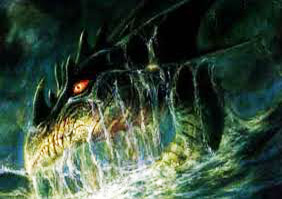
Description
The Tiamat Monster is considered the monstrous quintessence of ancient pandemonium.Although there are no early precedents for it, some sources identify her with images of a sea serpent or dragon.They are no precedents.It is mostly identified by sea dragons.They did give birth to dragons and serpents.
Century
This sea monster first exist in 19 th.
Region
Atlantica
Founder
Berossus
Deep Sea Cucumbers
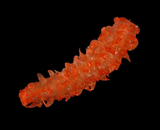 | 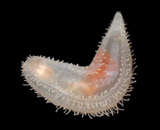 | 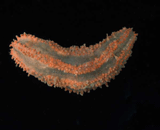 | 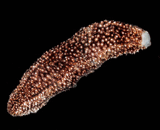 | ||||||||||||||||||||||||||||||||||||||||||||||||||||||||||||||||||||||||||||||||||
Deep Sea Crabs
Deep Sea Brittle Stars
Deep Sea Anemones
-->
Deep Sea Shells
Deep Sea Squirts
|
Deepseawaters Explorations
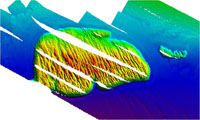 Integrated Ocean Mapping
Integrated Ocean MappingOur expedition takes us to unexplored waters south of the Philippine Islands, in search of the strange, and possibly unknown, fishes, jellyfish, squids and shrimp that live in the dark deep waters of the Celebes Sea. Surrounded by much shallower ocean waters...
Thunder Bay Sinkholes 2008
Samples of these microbial mats will also be analyzed for their potential application as pharmaceuticals. A long-term understanding of the groundwater's chemical and physical characteristics such as conductivity (an indication of the presence of ions), temperature, and flow will be obtained from a moored hydrographic instrument array.
Samples of these microbial mats will also be analyzed for their potential application as pharmaceuticals. A long-term understanding of the groundwater's chemical and physical characteristics such as conductivity (an indication of the presence of ions), temperature, and flow will be obtained from a moored hydrographic instrument array.
 Department of Energy to Provide Supercomputing Time to Run NOAA's Climate Change Models
Department of Energy to Provide Supercomputing Time to Run NOAA's Climate Change Models The U.S. Department of Energy's (DOE) Office of Science will make available more than 10 million hours of computing time for the U.S. Commerce Department's National Oceanic and Atmospheric Administration (NOAA) to explore advanced climate change models at three of DOE's national laboratories as part of a three-year memorandum of understanding on collaborative climate research signed today by the two agencies.
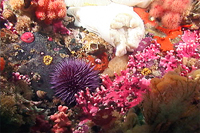 Deep Sea Corals
Deep Sea CoralsFor at least 200 years people who have fished have reported lines becoming entangled in deep-sea trees. These so called trees are thickets of corals that provide essential fish habitat for fish and other marine life. Unlike the shallow tropical coral reefs these corals are found in dark frigid waters often beyond the continental shelf break in many of the world's oceans.
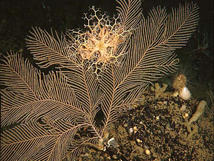 Medicines from the Deep Sea
Medicines from the Deep SeaThe discovery of novel chemical compounds from deep-sea marine organisms often takes us to new and exciting locations. One of the first steps in planning such an expedition is to thoroughly review the scientific literature about a new target site. This includes reviewing surveys and literature on the biology and geology of a region by environmental consulting firms, government agencies, such as the Minerals Management Service, National Marine Fisheries Service, and U.S. Geological Survey, and various research institutions.
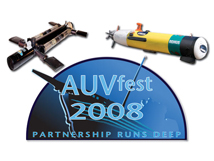 AUVfest 2008: Navy Mine-Hunting Robots help NOAA Explore Sunken History
AUVfest 2008: Navy Mine-Hunting Robots help NOAA Explore Sunken HistoryAUVfest 2008 is a unique opportunity to demonstrate and test the applications of autonomous underwater vehicles, or AUVs, for both mine countermeasures and archaeological research. In total, 13 AUV systems are participating in the missions, which will take place in Rhode Island's Narragansett Bay.
2007: Exploring the Inner Space of the Celebes Sea
Our expedition takes us to unexplored waters south of the Philippine Islands, in search of the strange, and possibly unknown, fishes, jellyfish, squids and shrimp that live in the dark deep waters of the Celebes Sea. Surrounded by much shallower ocean waters, the Celebes plunges to over 5,000 meters, and in these waters there may well be species that have evolved in isolation from other surrounding waters.
Our expedition takes us to unexplored waters south of the Philippine Islands, in search of the strange, and possibly unknown, fishes, jellyfish, squids and shrimp that live in the dark deep waters of the Celebes Sea. Surrounded by much shallower ocean waters, the Celebes plunges to over 5,000 meters, and in these waters there may well be species that have evolved in isolation from other surrounding waters.
Seeking a Better Understanding of Atmospheric Mercury
The Air Resources Laboratory measures and models atmospheric mercury to provide essential information to policy-makers and planners. Researchers are using their measurement capabilities at three core mercury monitoring sites in a multi-agency national monitoring network designed to address total mercury deposition across the country.
The Air Resources Laboratory measures and models atmospheric mercury to provide essential information to policy-makers and planners. Researchers are using their measurement capabilities at three core mercury monitoring sites in a multi-agency national monitoring network designed to address total mercury deposition across the country.
Bonaire 2008: Exploring Coral Reef Sustainability with New Technologies
This expedition will use AUVs to survey the most pristine coral reef environment in the Caribbean.Bonaire, Netherlands Antilles, is arguably the most pristine coral reef environment in the Caribbean. Percent coral cover is the highest and percent algal cover the lowest compared to other Caribbean reefs and thus its reef environment represents a baseline against which we can compare other coral reefs.
This expedition will use AUVs to survey the most pristine coral reef environment in the Caribbean.Bonaire, Netherlands Antilles, is arguably the most pristine coral reef environment in the Caribbean. Percent coral cover is the highest and percent algal cover the lowest compared to other Caribbean reefs and thus its reef environment represents a baseline against which we can compare other coral reefs.
“Fishery Failure” Declared for West Coast Salmon Fishery
Secretary of Commerce Carlos M. Gutierreztoday declared a commercial fishery failure for the West Coast salmon fishery due to historically low salmon returns. The unprecedented collapse of the salmon population will hit fishermen, their families, and fishing communities hard, and that is why we have moved quickly to declare a fishery disaster.
Secretary of Commerce Carlos M. Gutierreztoday declared a commercial fishery failure for the West Coast salmon fishery due to historically low salmon returns. The unprecedented collapse of the salmon population will hit fishermen, their families, and fishing communities hard, and that is why we have moved quickly to declare a fishery disaster.
Deep Sea Technology: Tools for Research
Technology has almost invaded all parts of the world. It has spread like a virus. It breathes underwater too. For over two decades now, NOAA’s NURP (NOAA’s Undersea Research Program) has revolutionized underwater research world. It has specialized not only in developing but also modifying and operating advanced underwater technologies. It has enabled Nation’s scientists to accomplish broad spectrum of research work. Some of the tools that has enabled such progress areSCUBA diving, Submersibles, remotely operated vehicles etc. The NURP- funded research supports NOAA’s responsibilities towards oceans, coasts and great lakes with the help of advanced research technologies. NURP supports scientific research that addresses NOAA's management responsibilities through a rigorous peer-review process patterned after the National Science Foundation.
To be successful, The OER Ocean Exploration and Research(OER)creates the capabilities within the scientific departments which involves dedicated staff to establish prior formalities based upon priorities for investment by working with future users of the technologies. This involves researching and monitoring advancements made by other agencies, institutions, academies and the industry. The OER takes the responsibilities for executing the investments through mechanisms such as grant, contracts. They also ensure that proven technologies are executed smoothly into operations. This in fact is also referred to as “end-to-end” technology development process.
Scuba Diving
SCUBA diving is an exciting and first-hand way for scientists to study the underwater environment. It is one among the most effective ways for executing underwater experiments that require high quality precise measurements. SCUBA as the name suggests stands for Self Contained Underwater Breathing Apparatus. It literally means that all divers carry all of required breathing equipments and gases with them. Hence they are subjected to water temperature, pressure, currents, and other factors revolvingoceans present at the diving depth. The NURP program approximately supports about 10,000 SCUBA Divers for Scientific Research work.
NURP provides all the necessary equipments and finances for scientists and technical assistance to conduct diving operations. They use both open circuit as well as closed circuit breathing apparatus. The difference between them primarily relies upon what happens to the exhaled gas. In open system the gas is exhaled in to the water. A closed system apparatus has recycling abilities and thus lasts longer underwater as it reduces carbon-dioxide and adds oxygen in a cyclic manner inside the container. It reduces the amount of gas required in the container and also allows the diver to remain streamlined.
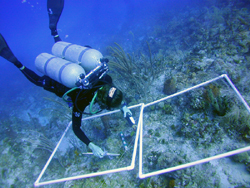 The breathing gas provided by NURP involves compressed air, NITROX and TRIMIX. NITROX is a composition of nitrogen and oxygen whilst TRIMIX is a composition of oxygen, nitrogen and helium. NITROX is of special interest to NOAA. It was in introduced in late 1970’s which allows the divers to stay longer underwater when compared to compressed air alone. Each of these gases is of different properties which enables the diver to dive at maximum depths. The NOAA Dive Manual (4th Edition) produced through the collaboration of NURP and NOAA Marine and Aviation Operations, which operates the NOAA Dive Program offers a high quality precise review about the diving equipments, gas mixtures, First-Aid, Marine Life and Brief history of Diving.
The breathing gas provided by NURP involves compressed air, NITROX and TRIMIX. NITROX is a composition of nitrogen and oxygen whilst TRIMIX is a composition of oxygen, nitrogen and helium. NITROX is of special interest to NOAA. It was in introduced in late 1970’s which allows the divers to stay longer underwater when compared to compressed air alone. Each of these gases is of different properties which enables the diver to dive at maximum depths. The NOAA Dive Manual (4th Edition) produced through the collaboration of NURP and NOAA Marine and Aviation Operations, which operates the NOAA Dive Program offers a high quality precise review about the diving equipments, gas mixtures, First-Aid, Marine Life and Brief history of Diving.
Deepsea Habitats
Divers do have some limitations that can inhibit their productivity. Factors such diving depth, gas mixture, weather and decompression obligations can have a significant impact on scientist’s research work. The more times spent underwater for research work can also raise financial constraints. Saturation diving on the other hand has proven to be useful for extending their research time spent underwater. It works accordingly as, if a diver’s tissues are in equilibrium with the surrounding water, then the decompression time will not end change for the length time spent underwater. The time taken for attaining saturation in saturation diving is about 24 hours and thus a diver can eventually spend 24 hours underwater continuously.
The development undersea habitat which is also known as undersea laboratories has made saturation diving a reality for divers and scientists for conducting better experiments. The undersea habitat is a pressurized facility that allows the divers to extend their depth ranges and depth times. Aquarius in the Florida keys national marine sanctuary, at a depth of 63 feet allows divers to undergo compression or decompression in the undersea habitat or a surface chamber.
Aquarius is the only undersea habitat in the world devoted to science. NURP provides the abilities to live and work beneath the waves in this laboratory. The habitat is owned by NOAA and operated by the South-eastern and Gulf of Mexico center, is located three miles of Key Largo at a depth of 64 feet. It is at the base of coral reef within the Florida Keys national marine sanctuary, an ideal place for studying the eco-systems. For a 10 day mission, the habitat can accommodate 4 scientists and 2 technicians. The Aquarius has supported over 80 missions from 1993 to 2003.
Want to learn more info about Deepsea Habitats.Click Here...
Human Occupied Submersibles
Scientists can be physically transferred to greater depths of the ocean far beyond the physiological restrictions of a diver with the help or submersibles. NURP has a variety of submersibles available. Namely Pisces 4 and Pisces 5 operated by Hawaii & West Pacific regional center carry one pilot and two scientists each. They are capable of diving around 2000 meters. It is custom equipped to accommodate a variety of requirements. Standard gear includes eternal video and still cameras, 2 hydraulic manipulator arms, CTD profiler and color sonar. Pisces 5 is 220 feet.
JSL known as Johnson-Sea-Link is owned by the Harbor Branch Oceanogra0-pphic Institution (HBOI) and leased to NURP scientists for research work. Thanks to its fish bowl acrylic sphere, 2 scientists can make experiments at 3000 feet underwater.
Delta submersible has 19 viewing ports and can reach a depth of up to 1100 feet. It is owned and operated by Delta Oceanographic. The submersible is pretty small that it can be carried around in a plane to research site across the world.
Alvin is a 3 person submersible vehicle (DSV) with a capability of reaching depths such as 14,450 feet. Owned by U.S.Navy and operated by Woods Hole Oceanographic Institute (WHOI) and funded by National Science Foundation (NSF), National Oceanographic Atmospheric Administration (NOAA) and the Navy. It has taken about 8300 people underwater of which 4000 are deep sea divers and have been on missions for about 20,000 hours underwater.
Delta submersible has 19 viewing ports and can reach a depth of up to 1100 feet. It is owned and operated by Delta Oceanographic. The submersible is pretty small that it can be carried around in a plane to research site across the world.
Alvin is a 3 person submersible vehicle (DSV) with a capability of reaching depths such as 14,450 feet. Owned by U.S.Navy and operated by Woods Hole Oceanographic Institute (WHOI) and funded by National Science Foundation (NSF), National Oceanographic Atmospheric Administration (NOAA) and the Navy. It has taken about 8300 people underwater of which 4000 are deep sea divers and have been on missions for about 20,000 hours underwater.
Want to learn more info about Human Occupied Vehicle.Click Here...
Remotely Operated Vehicles (ROVs)
Remotely Operated Vehicles (ROV’s) are unmanned robots. They are controlled by pilots via a long tether spooled out from the support ship. They can have extra fittings such as advancement cameras, lighting and sampling systems. Allows scientists to be virtually transported through a real time video transmission to greater depths. The advantages are greatly extended bottom times, reduced human risks, affordable technology, abilities to be deployed in harsh environments. NURP operates a number of ROV’s. ROV’s has been used to conduct science in a wide range of experiments from tropics to the poles.
Kraken owned by the center of North Atlantic and Great Lakes at university of Connecticut is one such ROV. It is a light vehicle with a depth capacity of about 3000 feet. The manipulator arm in them allows the pilot to pilot around, gather specimens for further observations and analysis. Its suction samplers collect organisms and sediments. The cameras installed in them allow high resolution, wide angles and close up color images illuminated by 400 watts of HMI lighting. A low monochromic camera can be used to view organisms that are sensitive to bright lights. A digital 35mm camera with flash facilities allows still photographs to be taken. Paired lasers allow the scientists to estimate the size and scale of the objects underwater. Scanning Sonar uses sound to view objects and organisms outside the visibility range of cameras and light equipments installed on board.
Autonomous Underwater Vehicles (AUVs)
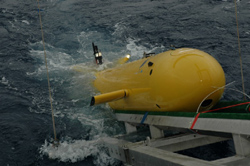 Autonomous Underwater Vehicles (AUV’s) forms a part of most recent class of undersea research technologies. It is independent of the surface, battery powered, controlled by super computers with the help of artificial intelligence. They are used to conduct various measurements, video surveillance tasks. The REMUS AUV was developed by Woods Hole Oceanographic Institution for NURP’s Mid-Atlantic Bight Center to perform wide area continental shelf surveys.
Autonomous Underwater Vehicles (AUV’s) forms a part of most recent class of undersea research technologies. It is independent of the surface, battery powered, controlled by super computers with the help of artificial intelligence. They are used to conduct various measurements, video surveillance tasks. The REMUS AUV was developed by Woods Hole Oceanographic Institution for NURP’s Mid-Atlantic Bight Center to perform wide area continental shelf surveys.
Sea Water to Drinking Water
Humans cannot drink saline water. But saline water can be made into fresh water which is required by everyone. 70% of our human body consists of water. That shows why water plays a key role for our survival. The process of converting salt water into sea water is known as desalination. US has great access to several water supplies for drinking purposes but still with the ever growing population shortage of water occurs more often in certain locations whilst in certain other locations salt water is converted into fresh water for drinking.
The optimum method to desalinate salt water is by reverse osmosis. But thanks to its high cost its being used pretty rarely. Reverse osmosis per acre foot for desalination costs about 1000$ compared to normal water supply sources who cost 200$ for the same acre foot. However desalination technology is improving and prices are falling. Tempa Bay, FL is currently desalinating water at 650$ per acre foot. As the demand for technology and fresh water increases more desalination procedures are more likely to happen, especially in areas such as California and Middle East.
The optimum method to desalinate salt water is by reverse osmosis. But thanks to its high cost its being used pretty rarely. Reverse osmosis per acre foot for desalination costs about 1000$ compared to normal water supply sources who cost 200$ for the same acre foot. However desalination technology is improving and prices are falling. Tempa Bay, FL is currently desalinating water at 650$ per acre foot. As the demand for technology and fresh water increases more desalination procedures are more likely to happen, especially in areas such as California and Middle East.
Saline water is water that contains large amounts of dissolved salts. This concentration is the amount of salt (by weight) in water expressed as ppm (parts per million). Say if a water has 10,000ppm of dissolved salt in it, then 1% of the weight of the water comes from them.
Parameters for saline water:
Fresh Water- Less than 1000 ppm
Slightly Saline Water- 1000 to 3000 ppm
Moderately Saline Water- 3000 to 10,000 ppm
Highly Saline Water- 10,000 to 35,000 ppm.
Our Oceans contain about 35,000 ppm of dissolved salts.
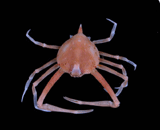
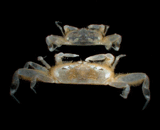
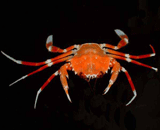
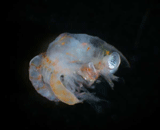
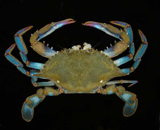
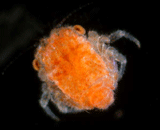
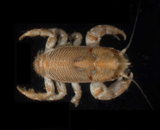
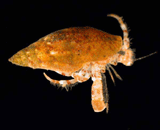
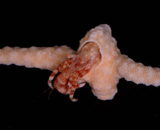
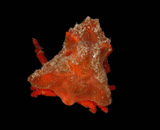
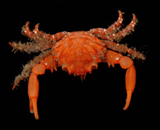
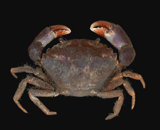
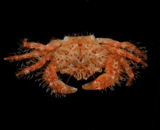
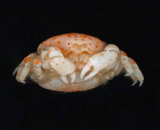
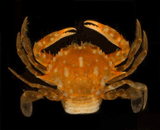
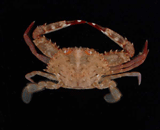
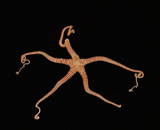
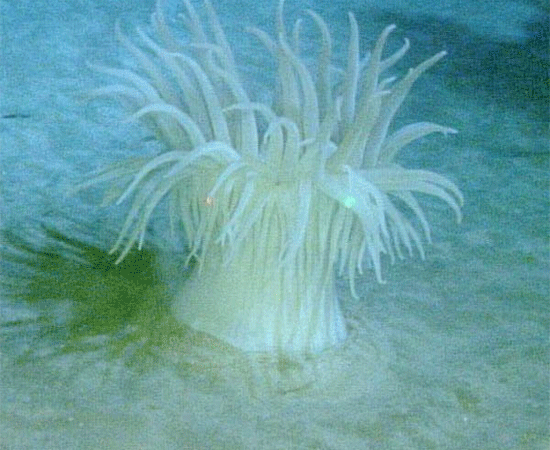
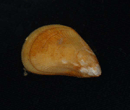
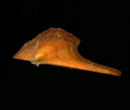
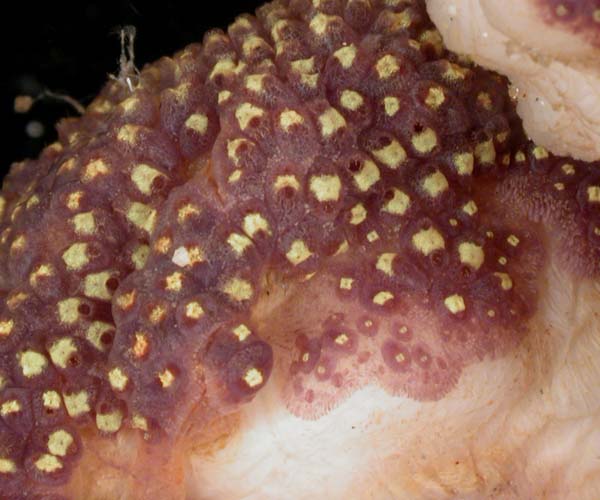
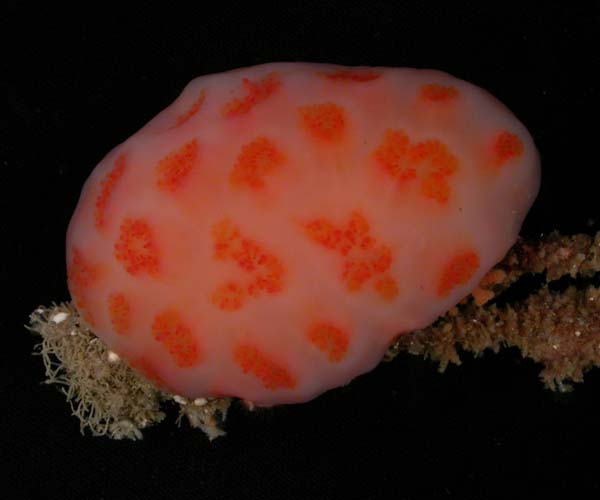

No comments:
Post a Comment